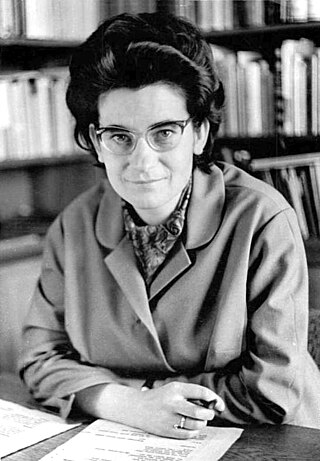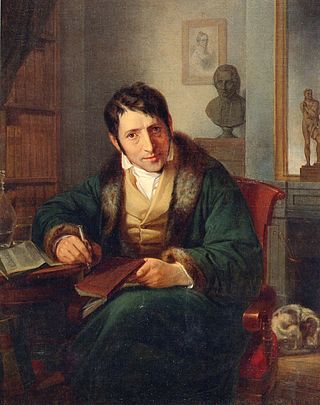
Sigmund Freud was an Austrian neurologist and the founder of psychoanalysis, a clinical method for evaluating and treating pathologies seen as originating from conflicts in the psyche, through dialogue between patient and psychoanalyst, and the distinctive theory of mind and human agency derived from it.

Carl Gustav Jung was a Swiss psychiatrist, psychotherapist, psychologist and pioneering evolutionary theorist who founded the school of analytical psychology. He was a prolific author, illustrator, and correspondent, and a complex and controversial character, perhaps best known through his "autobiography" Memories, Dreams, Reflections.

Alfred Ernest Jones was a Welsh neurologist and psychoanalyst. A lifelong friend and colleague of Sigmund Freud from their first meeting in 1908, he became his official biographer. Jones was the first English-speaking practitioner of psychoanalysis and became its leading exponent in the English-speaking world. As President of both the International Psychoanalytical Association and the British Psycho-Analytical Society in the 1920s and 1930s, Jones exercised a formative influence in the establishment of their organisations, institutions and publications.

Christa Wolf was a German novelist and essayist. She is considered one of the most important writers to emerge from the former East Germany.

Lou Andreas-Salomé was a Russian-born psychoanalyst and a well-traveled author, narrator, and essayist from a French Huguenot-German family. Her diverse intellectual interests led to friendships with a broad array of distinguished thinkers, including Friedrich Nietzsche, Sigmund Freud, Paul Rée, and Rainer Maria Rilke.

The Interpretation of Dreams is an 1899 book by Sigmund Freud, the founder of psychoanalysis, in which the author introduces his theory of the unconscious with respect to dream interpretation, and discusses what would later become the theory of the Oedipus complex. Freud revised the book at least eight times and, in the third edition, added an extensive section which treated dream symbolism very literally, following the influence of Wilhelm Stekel. Freud said of this work, "Insight such as this falls to one's lot but once in a lifetime."

Karl Ludwig Börne was a German-Jewish political writer and satirist, who is considered part of the Young Germany movement.

Avital Ronell is an American academic who writes about continental philosophy, literary studies, psychoanalysis, political philosophy, and ethics. She is a professor in the humanities and in the departments of Germanic languages and literature and comparative literature at New York University, where she co-directs the trauma and violence transdisciplinary studies program. As Jacques Derrida Professor of Philosophy, Ronell also teaches at the European Graduate School in Saas-Fee.
Cryptomnesia occurs when a forgotten memory returns without its being recognized as such by the subject, who believes it is something new and original. It is a memory bias whereby a person may falsely recall generating a thought, an idea, a tune, a name, or a joke; they are not deliberately engaging in plagiarism, but are experiencing a memory as if it were a new inspiration.

Totem and Taboo: Resemblances Between the Mental Lives of Savages and Neurotics, or Totem and Taboo: Some Points of Agreement between the Mental Lives of Savages and Neurotics, is a 1913 book by Sigmund Freud, the founder of psychoanalysis, in which the author applies his work to the fields of archaeology, anthropology, and the study of religion. It is a collection of four essays inspired by the work of Wilhelm Wundt and Carl Jung and first published in the journal Imago (1912–13): "The Horror of Incest", "Taboo and Emotional Ambivalence", "Animism, Magic and the Omnipotence of Thoughts", and "The Return of Totemism in Childhood".

Weimar Classicism was a German literary and cultural movement, whose practitioners established a new humanism from the synthesis of ideas from Romanticism, Classicism, and the Age of Enlightenment. It was named after the city of Weimar, Germany, because the leading authors of Weimar Classicism lived there.
Janine Burke is an Australian author, art historian, biographer, novelist and photographer. She also curates exhibitions of historical and contemporary art. She is Honorary Senior Fellow, Faculty of Fine Arts and Music, University of Melbourne. She was born in Melbourne in 1952.

Johann Wolfgang von Goethe was a German polymath, who is widely regarded as the greatest and most influential writer in the German language. His work has had a profound and wide-ranging influence on Western literary, political, and philosophical thought from the late 18th century to the present day. A poet, playwright, novelist, scientist, statesman, theatre director, and critic, his works include plays, poetry and aesthetic criticism, as well as treatises on botany, anatomy, and color.

Art history is, briefly, the history of art—or the study of a specific type of objects created in the past.

Psychology of the Unconscious is an early work of Carl Jung, first published in 1912. The English translation by Beatrice M. Hinkle appeared in 1916 under the full title of Psychology of the Unconscious: a study of the transformations and symbolisms of the libido, a contribution to the history of the evolution of thought. Hinkle's translation was reissued in 1992, as supplementary volume B to The Collected Works of C. G. Jung.
Goethean science concerns the natural philosophy of German writer Johann Wolfgang von Goethe. Although primarily known as a literary figure, Goethe did research in morphology, anatomy, and optics. He also developed a phenomenological approach to natural history, an alternative to Enlightenment natural science, which is still debated today among scholars.

"The Myth of the Vaginal Orgasm" is a feminist essay on women's sexuality written by American radical feminist activist Anne Koedt in 1968, and published in 1970. It first appeared in a four-paragraph outline form in the Notes from the First Year which resulted in an extended article in Notes from the Second Year journals published by the New York Radical Women and was partially based on findings from Masters and Johnson's 1966 work Human Sexual Response. It was then distributed as a pamphlet in its full form, including sections on evidence for the clitoral orgasm, female anatomy, and reasons the "myth" of vaginal orgasm is maintained.
The eternal feminine, a concept first introduced by Johann Wolfgang von Goethe at the end of his play Faust (1832), is a transcendental ideality of the feminine or womanly abstracted from the attributes, traits and behaviors of a large number of women and female figures. In Faust, these include historical, fictional, and mythological women, goddesses, and even female personifications of abstract qualities such as wisdom. As an ideal, the eternal feminine has an ethical component, which means that not all women contribute to it. Those who, for example, spread malicious gossip about other women or even just conform slavishly to their society's conventions are by definition non-contributors. Since the eternal feminine appears without explanation only in the last two lines of the 12,111-line play, it is left to the reader to work out which traits and behaviors it involves and which of the various women and female figures in the play contribute them. On these matters Goethe scholars have achieved a fair degree of consensus. The eternal feminine also has societal, cosmic and metaphysical dimensions.
Kurt Robert Eissler was an Austrian psychoanalyst and a scholar and archivist of the work and life of Sigmund Freud.

Philosophical Essays on Freud is a 1982 anthology of articles about Sigmund Freud and psychoanalysis edited by the philosophers Richard Wollheim and James Hopkins. Published by Cambridge University Press, it includes an introduction from Hopkins and an essay from Wollheim, as well as selections from philosophers such as Ludwig Wittgenstein, Clark Glymour, Adam Morton, Stuart Hampshire, Brian O'Shaughnessy, Jean-Paul Sartre, Thomas Nagel, and Donald Davidson. The essays deal with philosophical questions raised by the work of Freud, including topics such as materialism, intentionality, and theories of the self's structure. They represent a range of different viewpoints, most of them from within the tradition of analytic philosophy. The book received a mixture of positive, mixed, and negative reviews. Commentators found the contributions included in the book to be of uneven value.















